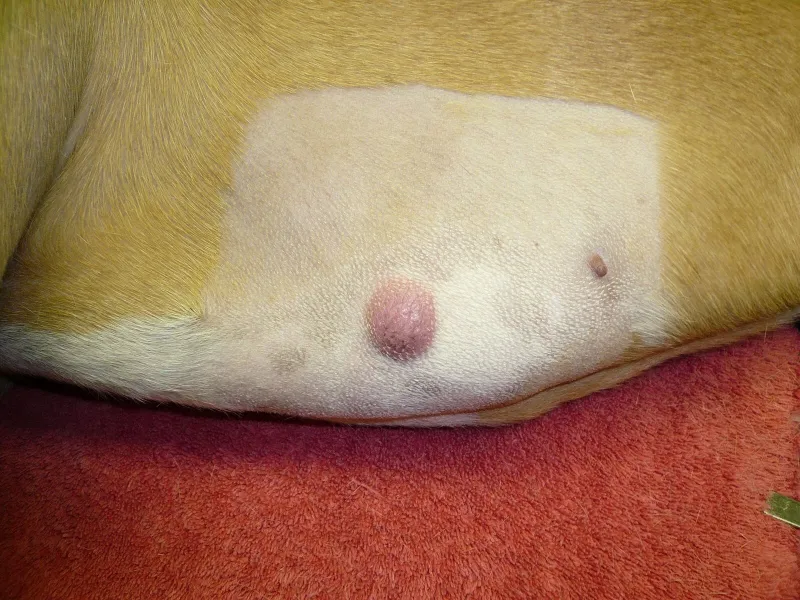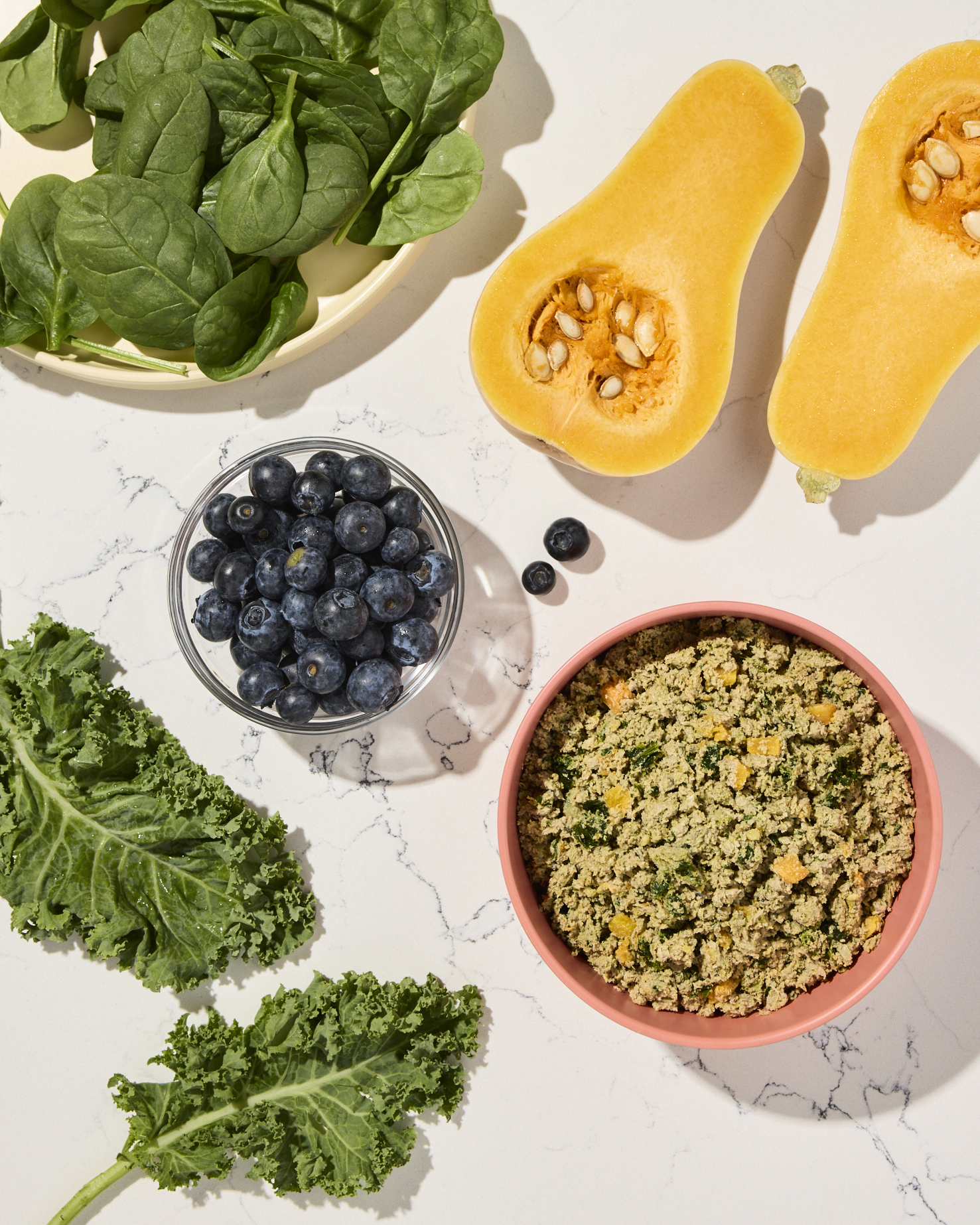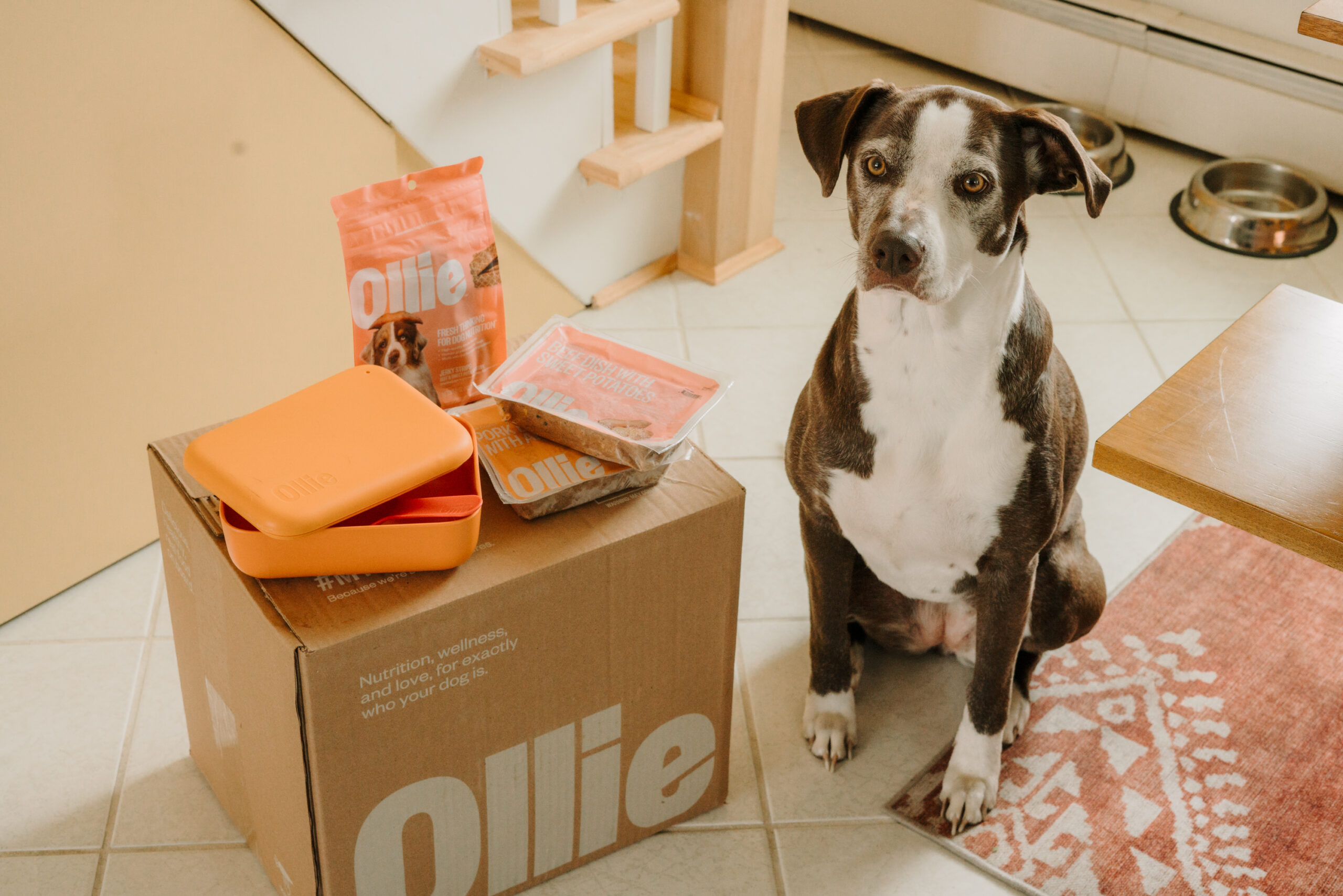Hey Ollie blog readers! We’re offering you an exclusive 60% OFF your starter box! Try now!
That fur coat may look like it protects your pup from the sun’s hot rays, but their skin is still sensitive! And with all this sunshine, those dangerous UV rays can cause skin cancer in dogs. Pups can even get sunburned! Our pals at Healthy Paws shared all their tips for pet parents on how to prevent skin cancer:

What causes skin cancer in dogs?
A variety of factors can lead to the disease, but the most common cause is sun damage. Other studies have indicated the following:
- Trauma to the skin, such as a cut or scrape, or compulsive licking can both cause cells to reproduce faster, increasing the likelihood of cancer-causing mutations.
- Female hormones estrogen and progesterone have also been linked to development of mast cell tumors, as have skin irritants and inflammation.
- Additionally, the papilloma virus—which causes small warts near the mouth—is suspected of causing squamous cell carcinoma tumors in dogs.
Skin cancer in dogs is also thought to be genetic; some dog breeds are more prone to developing certain types of cancer. Benign melanoma—non-cancerous growths in pigmented cells—are more common in Vizslas, Miniature Schnauzers, Dobermans and Airedale Terriers. The color of a dog’s coat may also factor in; malignant melanoma is frequently seen in the nail beds of black dogs. Squamous cell carcinoma occurs in the animal’s skin and more frequently in breeds like Basset Hounds, Collies, Dalmatians and Beagles—dogs with short, thin and often white-colored coats. Mast cell tumors are the most common skin tumors in dogs, appearing in Boxers, Boston Terriers, Labrador Retrievers, Beagles and Schnauzers.

Symptoms of dog skin cancer
The most obvious symptoms of skin cancer in dogs are lumps or bumps on the surface of the skin. The type and location of the cancer determines its appearance:
- Melanoma A mole-like growth up to 2.5 inches in diameter; can be red, brown, black or grey and occurs on the mouth and feet.
- Squamous cell carcinoma Wart-like in appearance, frequently occurring on the abdomen, genitals and feet.
- Mast cell tumor Visible lumps, usually on the trunk or legs; may ulcerate, causing open sores that can bleed.
Vulnerable areas include the nose, ears, muzzle, mouth, paw pads, and nail beds. Depending on the location of the growth, your dog may limp or excessively scratch and lick the affected area; stop this behavior by getting a cone, as it can lead to infection and further inflammation. These growths can be benign or malignant, so have any unusual spots checked by your vet. Skin cancer in dogs is commonly misdiagnosed as an infected cut, especially when it occurs on the paws and nail beds.
How can I prevent dog skin cancer?
Since many types of skin cancer in dogs are caused by genetics, there’s only so much you can do. If your dog is a breed known to have a higher incidence of skin cancer, talk to your vet before spaying or neutering; recent studies have shown altering your pet increases the risk of some cancers. However, the benefits of spaying/neutering – reducing aggression, preventing unwanted litters, and eliminating wanderlust – generally outweigh the potential costs, especially in the long term.
But you can help prevent your pet from getting papillomas, or warts, thought to be a precursor to skin cancer in dogs. They’re caused by a virus, which is transmitted via infected pets; steer clear of sick dogs or those whose health status is unclear. Compulsive licking is believed to stimulate cell replication, leading to cancer-causing mutations. If your dog is suffering from summertime hot spots, oatmeal baths or cooling sprays can relieve itchiness, while a pet cone or E-collar prevents excessive grooming.
Soak up the sun safely
Stopping sun damage is the easiest way for pet parents to prevent dog skin cancer. Limit your pet’s sunbathing, especially in dogs with thin or white fur. Always provide a shaded area for dogs when spending time outside, especially during noon and from 5 to 7pm—the hottest parts of the day. Avoid potentially hot surfaces like asphalt, concrete and sand, or outfit your pet with a set of protective booties.
Dog-safe sunscreen is always a good idea, but never apply products intended for humans. Apply it to areas with little or no fur, like the abdomen, muzzle, nose and ears. If you’re soaking up some serious sunshine, consider protective sun gear that blocks harmful UV rays. These doggy sun clothes are often designed like rash guards or tank tops, infused with SPF. If your pet’s the adventurous type, a pair of dog sunglasses or goggles can protect eyes from trauma and sun damage. Doggles fit securely on even the wiggliest of pups and are available in a variety of sizes and styles.
Content provided by Healthy Paws Pet Insurance. Healthy Paws is one of the leading pet insurance program providers in the U.S. for dogs and cats, and is ranked #1 by customers on leading review websites. Click here to get 10% off Healthy Paws pet insurance!
(Policies are underwritten and issued by ACE American Insurance Company, Indemnity Insurance Company of North America, ACE Property & Casualty Insurance Company, Atlantic Employers Insurance Company, members of the Chubb Group.)
The Ollie blog is devoted to helping pet parents lead healthier lives with their pups. If you want to learn more about our fresh, human-grade food, check out MyOllie.com.
Tagged As:

The nutrition your dog needs,
the food they want.

Enjoying our articles? Subscribe our Newsletters and get new articles directly to your inbox
You might also like
4 June 2025
5 MINS READ
How Can Fresh Dog Food Help with Weight Management?
Maintaining a healthy weight is one of the most important aspects of your dog’s overall health and longevity. Being overweight or underweight can result in health complications and conditions that…
23 May 2025
5 MINS READ
Why Fresh Dog Food Makes Happier, Healthier Dogs That Live Longer
Every pup parent wants their dog to live a long, happy life, and the path to a healthier, happier dog starts with what’s in their bowl. Recent research and expert insights reveal that fresh dog …
by Ollie Pets
23 May 2025
8 MINS READ
Why Human-Grade Ingredients Matter for Dogs with Health Issues
For dogs with allergies, sensitive stomachs, or other health concerns, a higher quality of life starts with food made from higher quality ingredients. The right nutrition can make a significant di…
by Ollie Pets







